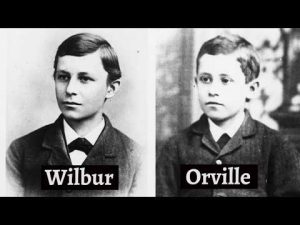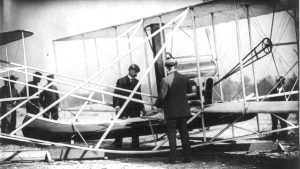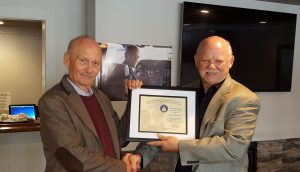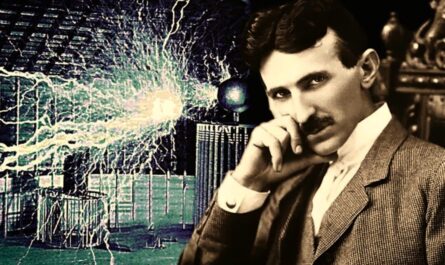Early Life and Inspiration: The Roots of a Lifelong Passion
Wilbur and Orville Wright, born in 1867 and 1871 respectively, grew up in a household that encouraged curiosity and learning. The Wright brothers’ father, Milton Wright, was a bishop who frequently traveled and instilled in his children a sense of exploration. Their mother, Susan Wright, was mechanically inclined and would often fix appliances around the home. This combination of intellectual encouragement and mechanical aptitude created a fertile environment for their inventive minds.
From a young age, Wilbur and Orville were fascinated by flight. Their interest was ignited when their father brought home a toy helicopter, made of bamboo and powered by a rubber band. This simple toy captured their imagination, and they would later recall it as the spark that set them on the path toward aviation. Although they followed different educational paths, their childhood was filled with projects and experiments, developing the skills that would ultimately enable them to transform human transportation.
Experimentation and Research: Learning from the Ground Up
The Wright brothers began their journey into flight by studying the work of other aviation pioneers. Otto Lilienthal, a German engineer known for his glider experiments, was a major influence. Tragically, Lilienthal lost his life during a test flight, which underscored for the Wright brothers the inherent risks in aviation. Nonetheless, they remained undeterred, deeply committed to understanding the principles of flight. Unlike other early aviation enthusiasts, Wilbur and Orville meticulously documented each phase of their work, determined to solve the puzzle of controlled flight.
In 1899, Wilbur wrote to the Smithsonian Institution, requesting informat ion on the mechanics of flight. The brothers learned about lift, drag, and the principles of air pressure from academic sources. They realized that control was the missing element in all previous flight attempts. Most inventors focused solely on achieving lift but failed to maintain control. To address this issue, the Wright brothers developed the concept of “wing-warping,” a revolutionary approach that allowed them to control the aircraft’s movement along three axes: pitch, roll, and yaw.
ion on the mechanics of flight. The brothers learned about lift, drag, and the principles of air pressure from academic sources. They realized that control was the missing element in all previous flight attempts. Most inventors focused solely on achieving lift but failed to maintain control. To address this issue, the Wright brothers developed the concept of “wing-warping,” a revolutionary approach that allowed them to control the aircraft’s movement along three axes: pitch, roll, and yaw.
Building Their First Gliders: Testing the Theories
Armed with knowledge, the Wright brothers started building gliders to test their ideas. In 1900, they moved to Kitty Hawk, North Carolina, an area known for its strong, steady winds and soft sandy terrain, ideal for testing gliders. Their initial models faced numerous challenges, but each failure taught them valuable lessons. They built three gliders between 1900 and 1902, gradually refining their designs and mastering the principles of controlled flight.
In their 1902 glider, they introduced a movable rudder, which worked in tandem with their wing-warping system. This model became the most successful glider to date, allowing them to fly longer and more controlled flights. With each successful flight, their confidence grew. They felt ready to take the next step: creating a powered aircraft.
The First Powered Flight: A Milestone in Human History
In 1903, the Wright brothers designed and built a lightweight gasoline engine for their aircraft, called the Wright Flyer. As no engine existed that met their needs, they collaborated with their mechanic, Charlie Taylor, to develop an engine specifically for their plane. After months of anticipation and preparation, they were ready to test the aircraft on December 17, 1903.
In Kitty Hawk, under cold and windy conditions, the brothers prepared for the historic flight. Wilbur piloted the first attempt but lost control, resulting in a minor crash. They quickly repaired the Flyer, and on the fourth attempt, Orville managed to stay aloft for 12 seconds, covering 120 feet. This may seem short by today’s standards, but it was a momentous achievement—the first successful, controlled, powered flight in human history. Their final attempt that day saw Wilbur fly for nearly a full minute, covering a distance of 852 feet.
Overcoming Challenges: Recognition and the Road to Success
Although the Wright brothers’ success was undeniable, achieving recognition was not immediate. Many were skeptical of their accomplishment, as photography and media coverage were limited at the time. They returned to Ohio, where they continued to improve their designs, determined to bring their invention to the world. Over the next few years, they perfected the Wright Flyer, transforming it from a simple experiment into a practical, reliable machine capable of sustained flight.
By 1908, they gained significant attention, demonstrating their aircraft for the U.S. Army and the general public in Europe. In France, where aviation interest was high, the Wright brothers achieved hero status, sparking intense media coverage and inspiring other inventors. Their success marked the beginning of a new industry, and they received contracts from military and commercial entities worldwide.
The Legacy of the Wright Brothers: A Sky-High Impact
The Wright brothers’ contributions to aviation went beyond just creating the first successful airplane. They pioneered the concepts of aerodynamics, propulsion, and control that continue to shape aviation today. Their work opened the doors to modern aviation, eventually leading to the development of the commercial airline industry, military aviation, and even space exploration. Orville continued to advocate for aviation advancements until his death in 1948, while Wilbur passed away prematurely in 1912, but their legacy lives on.
Their story is one of persistence, curiosity, and dedication to advancing human knowledge. The Wright brothers transformed a childhood fascination into a reality that changed the world. Today, the aviation industry connects the globe, enabling billions to travel and explore. Their dream of controlled flight evolved into a global infrastructure of airports, airlines, and air traffic systems. Their achievements remain celebrated in countless museums and educational programs, and their pioneering spirit continues to inspire inventors, scientists, and dreamers worldwide.
Wright Brothers: Key Facts and Timeline
| Full Names | Wilbur Wright and Orville Wright |
|---|---|
| Birth | Wilbur: April 16, 1867, Millville, Indiana, USA Orville: August 19, 1871, Dayton, Ohio, USA |
| Death | Wilbur: May 30, 1912, Dayton, Ohio, USA Orville: January 30, 1948, Dayton, Ohio, USA |
| Nationality | American |
| Education | High school education; largely self-taught in mechanics and engineering |
| Known For | Inventing, building, and flying the first powered aircraft with controlled flight capabilities |
| Notable Inventions | The Wright Flyer, Wing-Warping Control Mechanism, Aircraft Rudder System |
| Awards | Congressional Gold Medal, Aero Club of America Medal of Honor, Legion of Honor (France), Smithsonian Langley Medal |
| Legacy | Pioneered modern aviation, laid the groundwork for the global airline industry, inspired aeronautical engineering |



